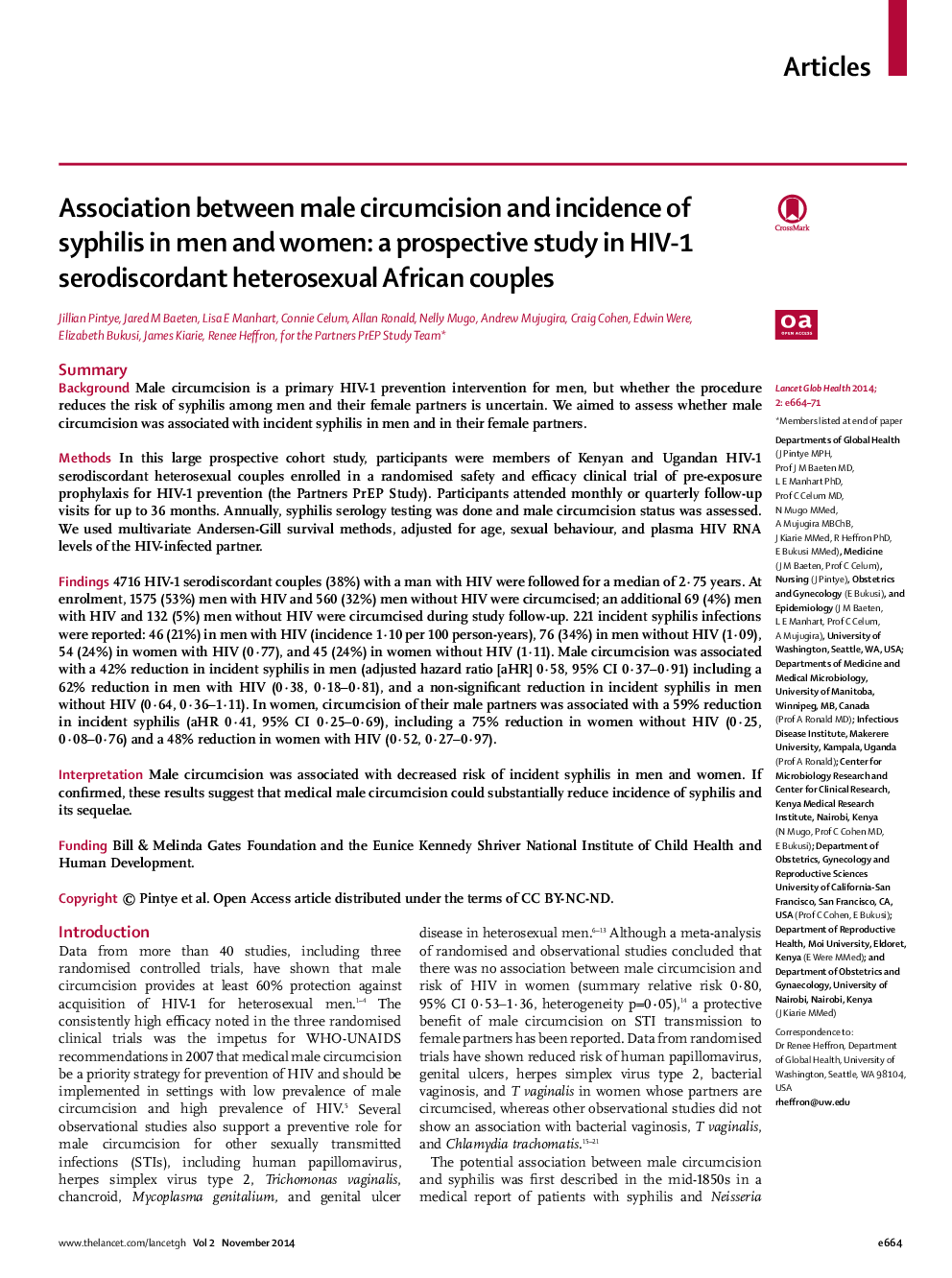| کد مقاله | کد نشریه | سال انتشار | مقاله انگلیسی | نسخه تمام متن |
|---|---|---|---|---|
| 3409125 | 1223984 | 2014 | 8 صفحه PDF | دانلود رایگان |

SummaryBackgroundMale circumcision is a primary HIV-1 prevention intervention for men, but whether the procedure reduces the risk of syphilis among men and their female partners is uncertain. We aimed to assess whether male circumcision was associated with incident syphilis in men and in their female partners.MethodsIn this large prospective cohort study, participants were members of Kenyan and Ugandan HIV-1 serodiscordant heterosexual couples enrolled in a randomised safety and efficacy clinical trial of pre-exposure prophylaxis for HIV-1 prevention (the Partners PrEP Study). Participants attended monthly or quarterly follow-up visits for up to 36 months. Annually, syphilis serology testing was done and male circumcision status was assessed. We used multivariate Andersen-Gill survival methods, adjusted for age, sexual behaviour, and plasma HIV RNA levels of the HIV-infected partner.Findings4716 HIV-1 serodiscordant couples (38%) with a man with HIV were followed for a median of 2·75 years. At enrolment, 1575 (53%) men with HIV and 560 (32%) men without HIV were circumcised; an additional 69 (4%) men with HIV and 132 (5%) men without HIV were circumcised during study follow-up. 221 incident syphilis infections were reported: 46 (21%) in men with HIV (incidence 1·10 per 100 person-years), 76 (34%) in men without HIV (1·09), 54 (24%) in women with HIV (0·77), and 45 (24%) in women without HIV (1·11). Male circumcision was associated with a 42% reduction in incident syphilis in men (adjusted hazard ratio [aHR] 0·58, 95% CI 0·37–0·91) including a 62% reduction in men with HIV (0·38, 0·18–0·81), and a non-significant reduction in incident syphilis in men without HIV (0·64, 0·36–1·11). In women, circumcision of their male partners was associated with a 59% reduction in incident syphilis (aHR 0·41, 95% CI 0·25–0·69), including a 75% reduction in women without HIV (0·25, 0·08–0·76) and a 48% reduction in women with HIV (0·52, 0·27–0·97).InterpretationMale circumcision was associated with decreased risk of incident syphilis in men and women. If confirmed, these results suggest that medical male circumcision could substantially reduce incidence of syphilis and its sequelae.FundingBill & Melinda Gates Foundation and the Eunice Kennedy Shriver National Institute of Child Health and Human Development.
Journal: The Lancet Global Health - Volume 2, Issue 11, November 2014, Pages e664–e671